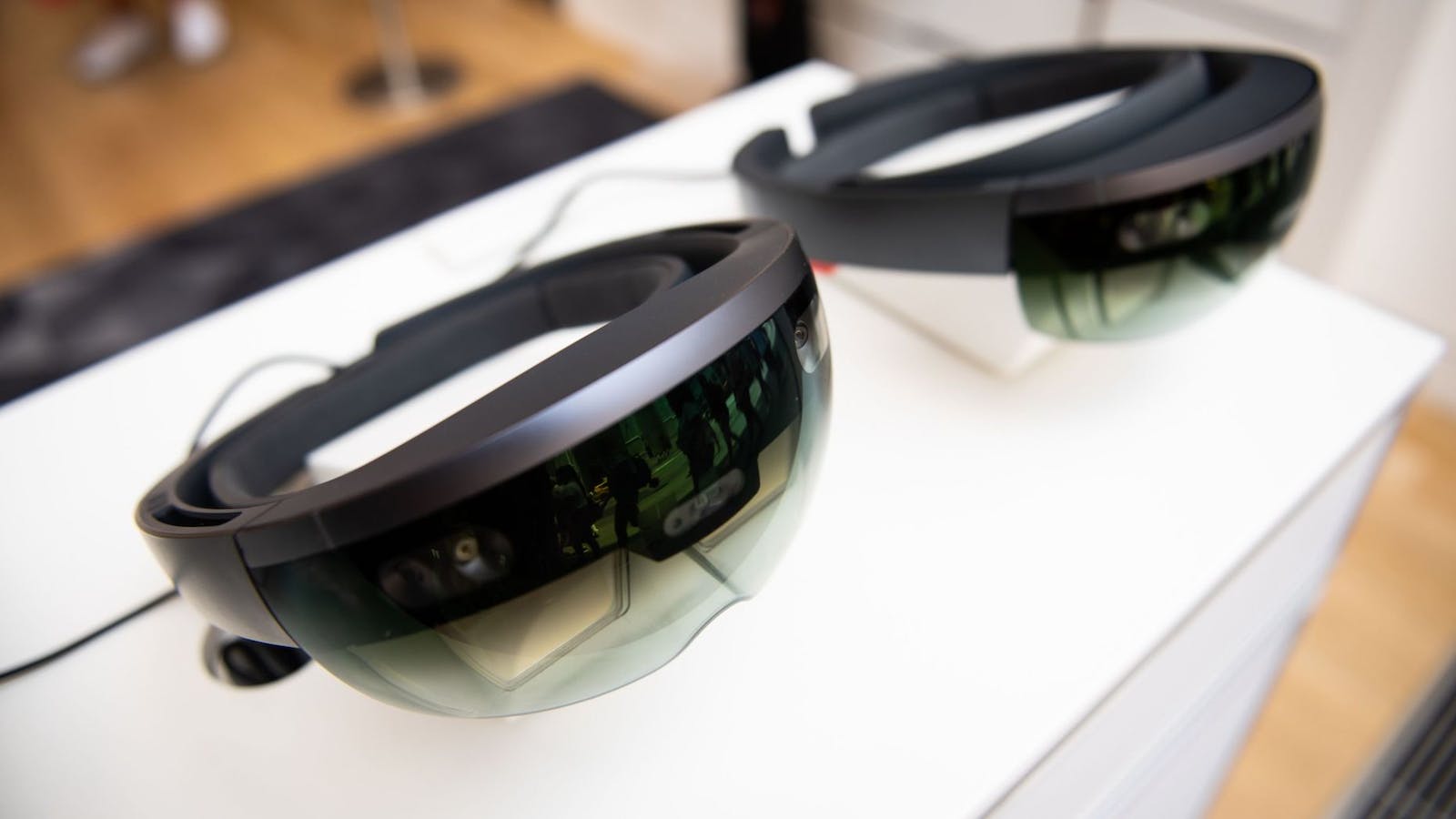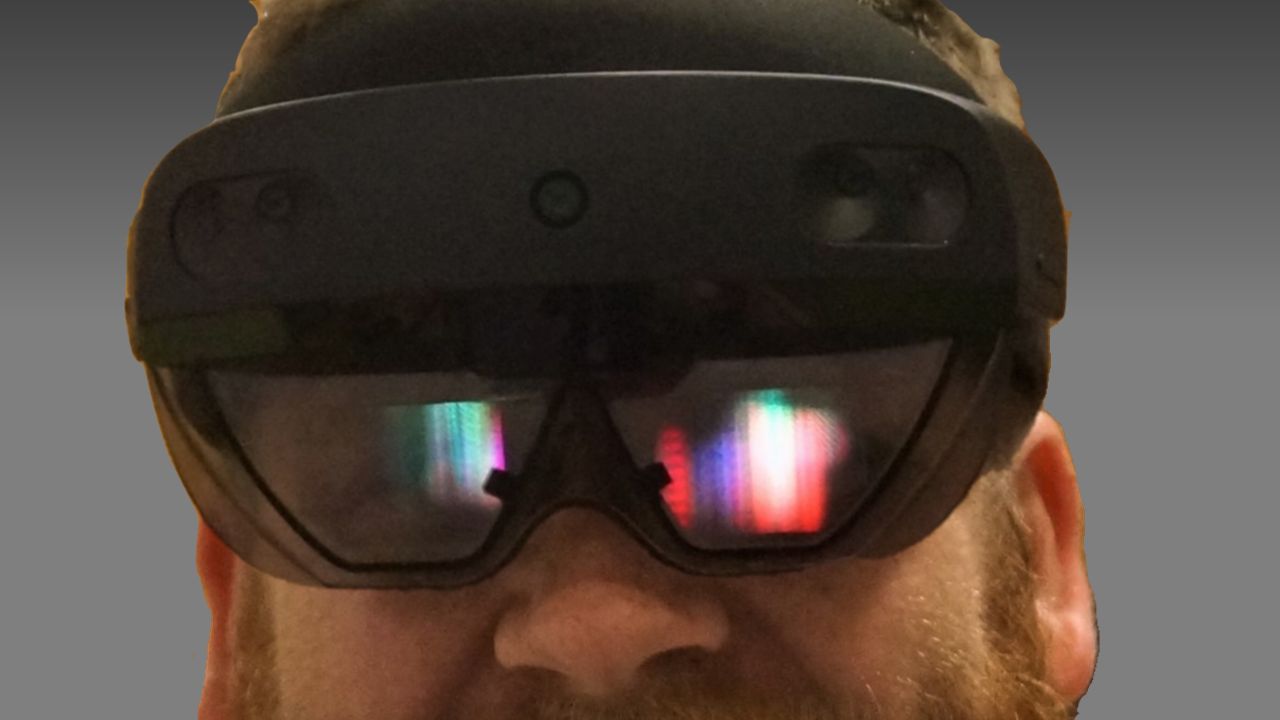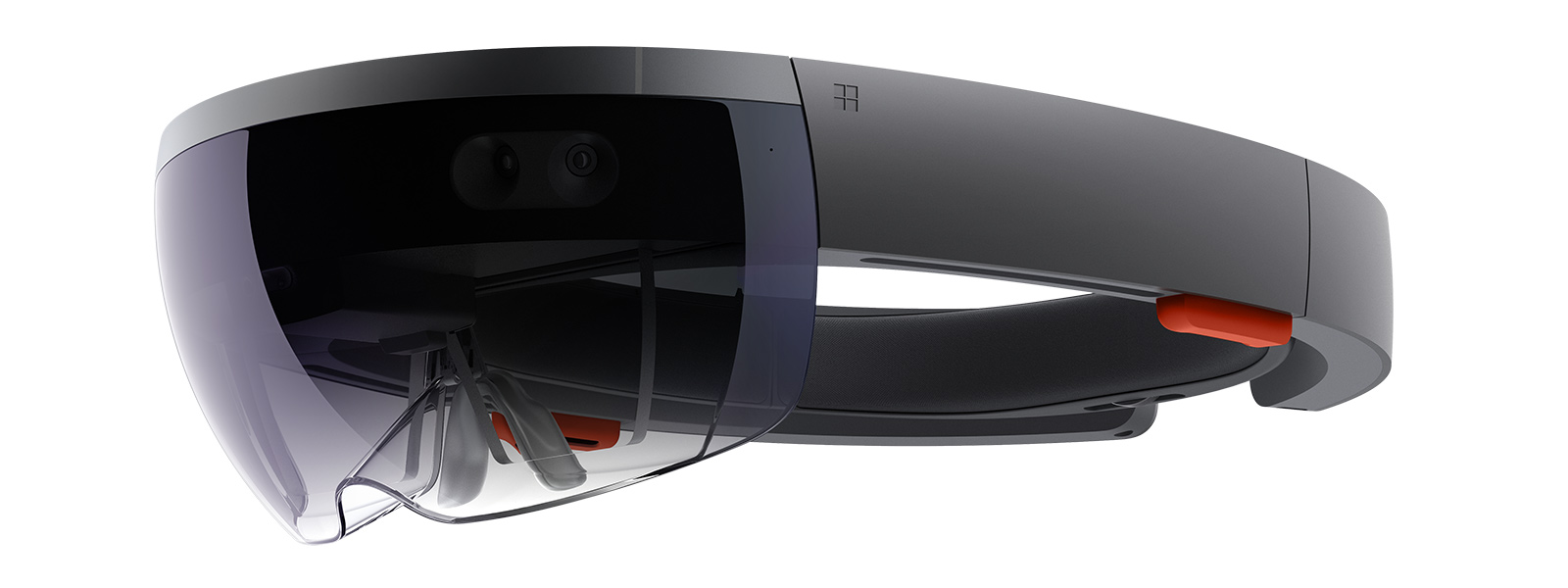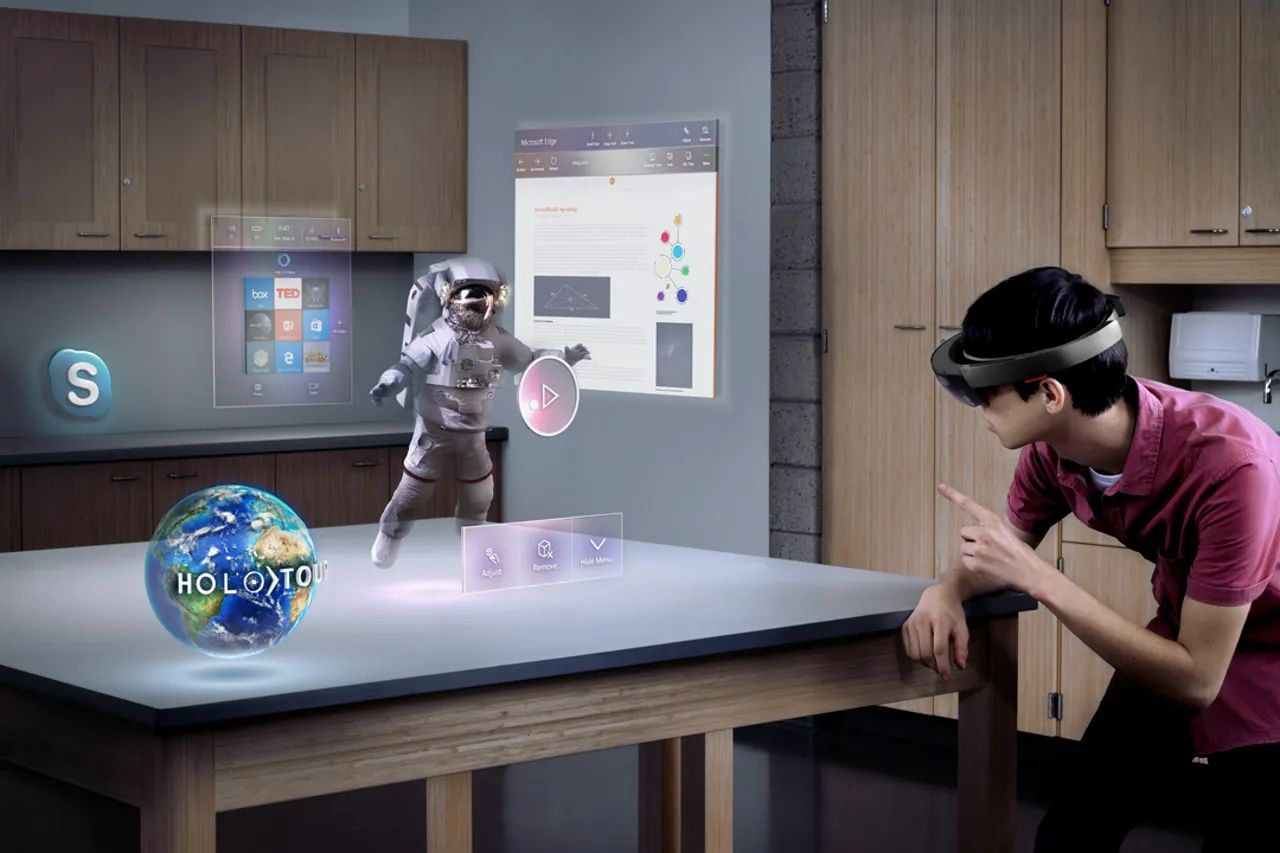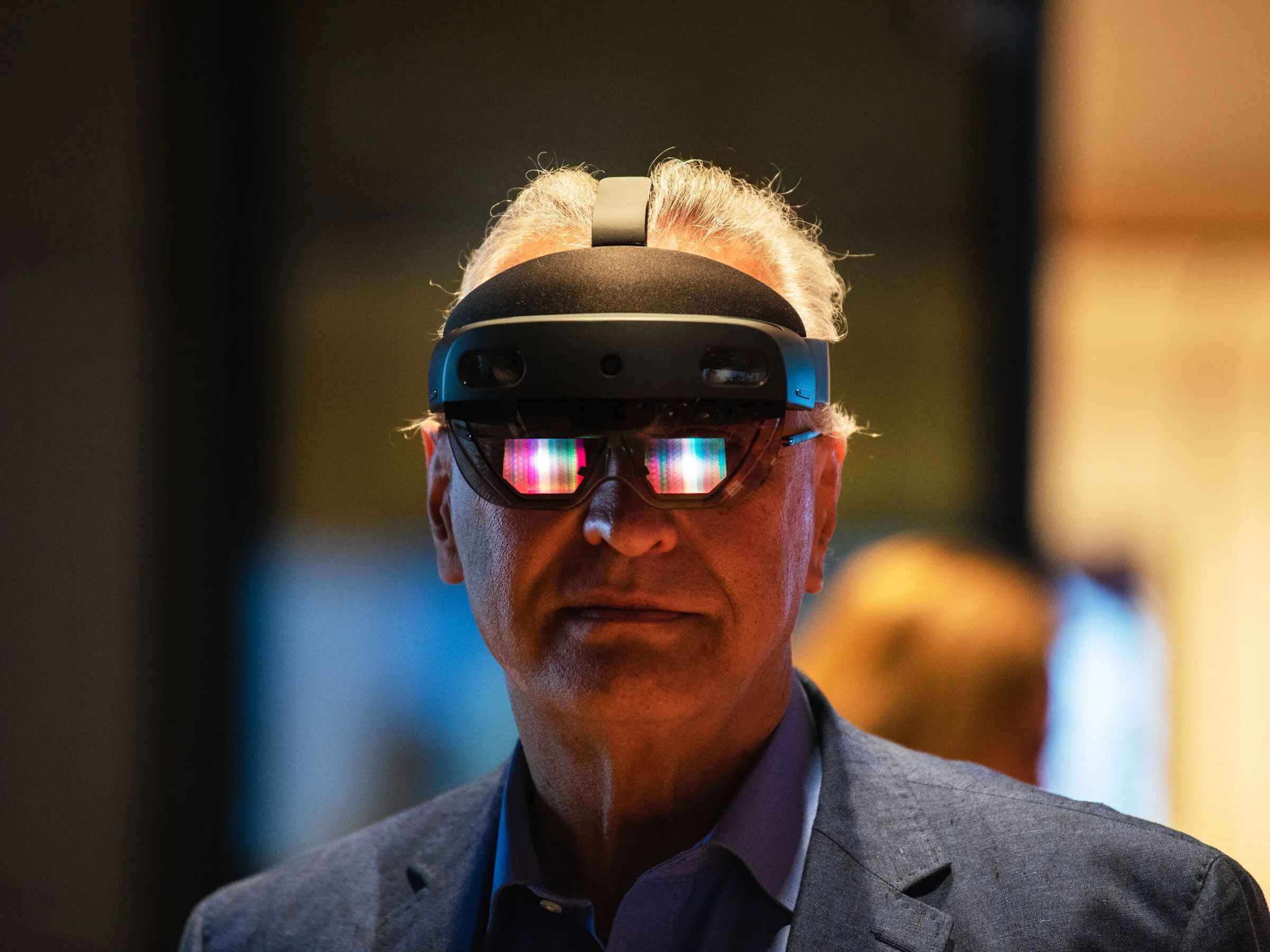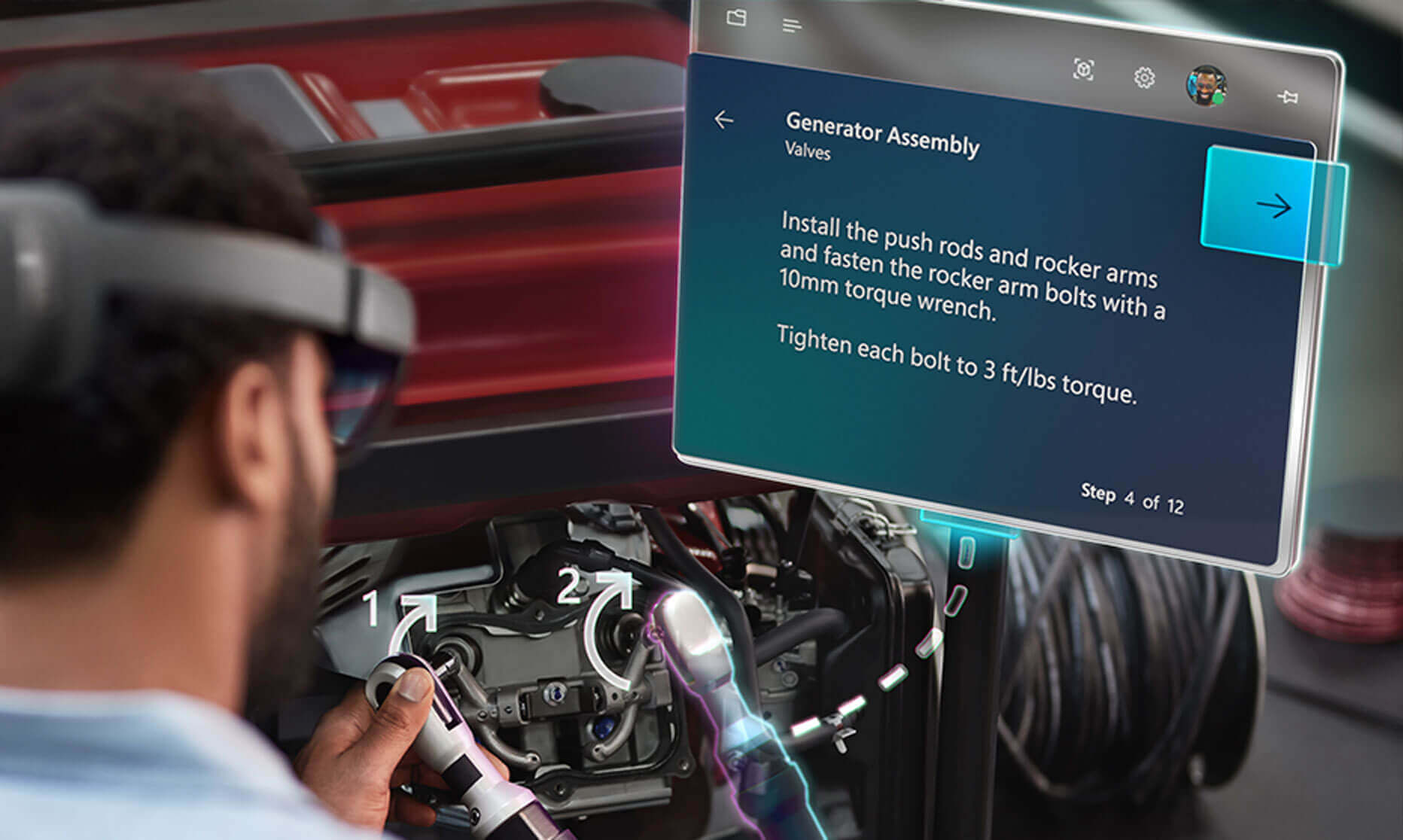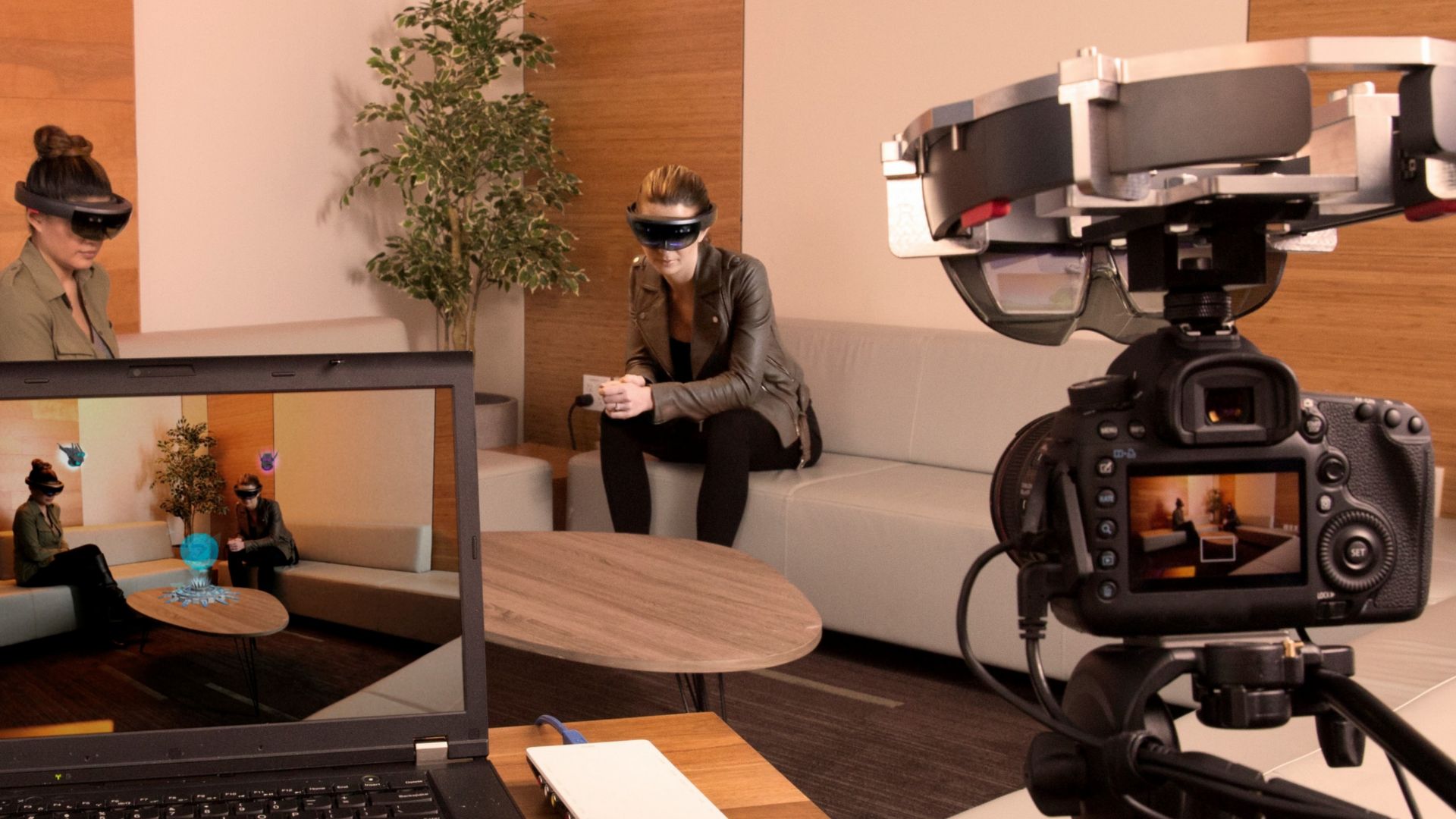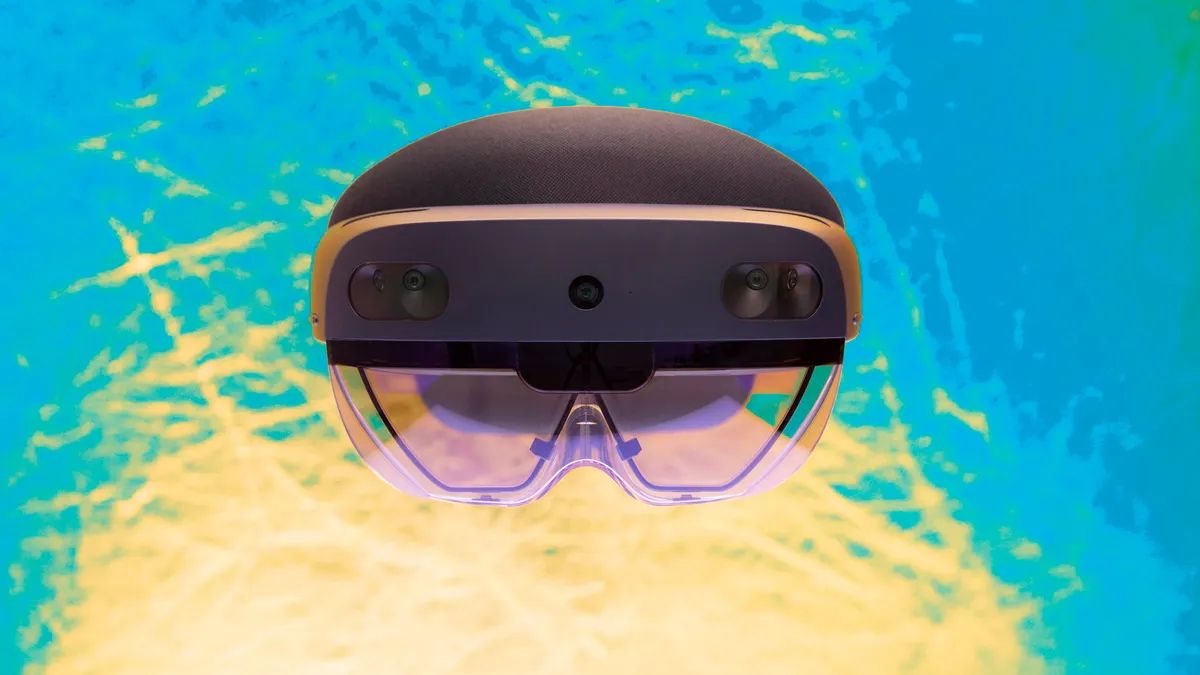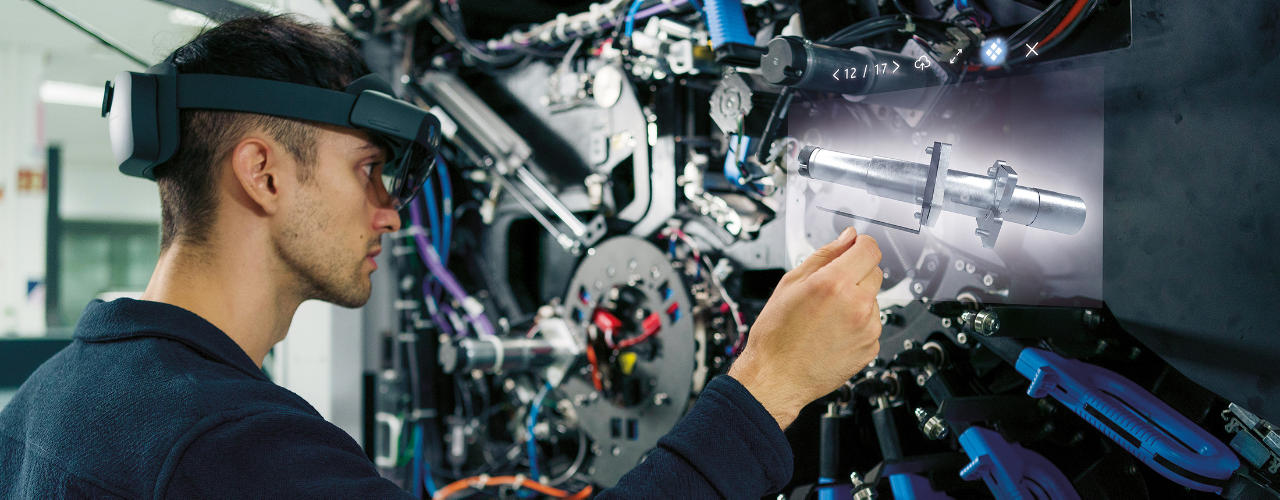Introduction
Web requests are an essential aspect of any HoloLens app development. They allow your app to communicate and exchange data with external servers or APIs, opening up a world of possibilities for functionality, real-time updates, and seamless integration with web services. Whether you need to fetch data, send user information, or retrieve files, understanding how to make web requests in a HoloLens app is vital.
In this article, we will explore the importance of web requests in HoloLens apps and provide a step-by-step guide on how to incorporate web request functionality into your HoloLens Unity projects. We will cover both making GET and POST requests and handling response data to ensure a smooth and efficient user experience.
If you’re new to HoloLens development, don’t worry – we’ll also walk you through setting up the HoloLens environment and creating a Unity project. By the end, you’ll have a solid foundation to start implementing web requests in your HoloLens apps.
But before we dive into the technical details, let’s understand why web requests are so significant in the context of HoloLens app development.
What are Web Requests
Web requests, also known as HTTP requests, are the mechanism used by applications to communicate with web servers. They allow the exchange of data between the client (in this case, your HoloLens app) and the server hosting the website or web service. Web requests are the foundation of many online interactions, such as fetching data, submitting forms, and retrieving files.
When making a web request, your app sends a request to the server, specifying the desired action, such as retrieving data or sending data. The server processes the request and sends back a response. The response can include a variety of data, such as HTML content, JSON data, images, or files, depending on the nature of the request.
Web requests follow the Hypertext Transfer Protocol (HTTP), which defines a set of rules and standards for communication between clients and servers. The most commonly used methods for web requests are GET and POST:
- GET: This method is used to retrieve data from the server. When you visit a website, your browser sends a GET request to the server, which responds with the HTML content to render the page. In the context of HoloLens app development, you can use GET requests to fetch data from APIs, databases, or other web services.
- POST: This method is used to send data to the server, usually as part of a form submission or when creating new resources. In HoloLens apps, you can use POST requests to send user input, such as login credentials or form data, to a server for processing.
Web requests are essential for HoloLens apps as they allow you to integrate with existing web services, fetch real-time data, and make your app more dynamic and interactive. Whether you’re building an augmented reality shopping experience, a social networking app, or a data visualization tool, web requests enable seamless communication between your HoloLens app and the outside world.
Importance of Web Requests in HoloLens Apps
Web requests play a crucial role in the development of HoloLens apps, enabling various functionalities and enhancing the overall user experience. Here are several reasons why web requests are important in HoloLens app development:
Accessing Real-Time Data: HoloLens apps often require real-time data updates for applications such as live tracking, sports scores, or stock market information. Web requests allow you to fetch data from external servers or APIs, ensuring that your HoloLens app always displays the most up-to-date information to users.
Integration with Web Services: Many HoloLens apps rely on external web services for extended functionality. Web requests enable seamless integration with these services, allowing your app to leverage their APIs, retrieve data, and provide a truly immersive and interactive experience. Whether it’s retrieving weather information, displaying social media feeds, or accessing online storage, web requests facilitate the connection between your HoloLens app and the web services it relies on.
User Interaction and Input: Web requests enable HoloLens apps to gather user input and interact with online forms and portals. Whether it’s submitting login credentials, creating new user accounts, or participating in online surveys, web requests allow users to seamlessly interact with web-based systems through the HoloLens app.
File Transfer and Download: HoloLens apps often need to transfer or download files from remote servers. Whether it’s downloading 3D models, images, documents, or audio/video files, web requests provide a mechanism for your app to retrieve these resources and make them available to users in an immersive AR experience.
Communication with Databases: Web requests serve as a bridge between HoloLens apps and databases, allowing for the retrieval and submission of data. This enables features such as user authentication, data storage, and synchronization between multiple devices.
By incorporating web requests into your HoloLens app, you empower it with enhanced functionality, real-time updates, and seamless integration with web services, thereby creating a more engaging and immersive user experience. Whether you’re building an educational app that collaborates with online resources, a gaming app that synchronizes with leaderboards, or a productivity app that interacts with online productivity tools, web requests are instrumental in taking your HoloLens app to the next level.
Setting up the HoloLens Environment
Before diving into the development of HoloLens apps with web request functionality, you need to set up the HoloLens environment. Here’s a step-by-step guide to help you get started:
1. Install and Set Up Unity: Unity is the primary development platform for HoloLens apps. Download and install the latest version of Unity from the official Unity website. During installation, ensure that you select the “Universal Windows Platform (UWP)” as the target platform.
2. Install the Windows 10 SDK: The Windows 10 SDK is necessary for developing applications for HoloLens. Download and install the Windows 10 SDK from the official Microsoft website. Make sure to select the components required for HoloLens development.
3. Set Up HoloLens Emulator (Optional): If you don’t have access to a physical HoloLens device, you can still develop and test your HoloLens app using the HoloLens emulator. Install the HoloLens emulator from the Windows 10 SDK installation package, and follow the instructions provided to set it up.
4. Configure Visual Studio: Visual Studio is the integrated development environment (IDE) for HoloLens app development. Install the latest version of Visual Studio and ensure that the “Universal Windows Platform development” workload is selected during installation. Also, make sure to install the necessary components such as the “Unity Editor” and the “.NET desktop development” workload.
5. Create a Microsoft Developer Account: To deploy your HoloLens apps as well as test them on a physical device, you’ll need a Microsoft Developer Account. Visit the Microsoft Developer Center website and sign up for an account if you don’t have one already.
6. Set Up HoloLens Device: If you have a physical HoloLens device, make sure it is fully charged and connected to Wi-Fi. Enable Developer Mode on the device by going to Settings > Update & Security > For developers and selecting “Developer mode”.
7. Pair HoloLens Device with PC: Open the Windows Device Portal on the HoloLens device by navigating to Settings > Update & Security > For developers > Device portal. Follow the instructions provided to pair the device with your PC.
Once you’ve set up the HoloLens environment, you’re ready to start creating your HoloLens Unity project and adding web request functionality. Stay tuned for the next section where we’ll guide you through creating a HoloLens Unity project from scratch.
Creating a HoloLens Unity Project
Now that you have your HoloLens environment set up, it’s time to create a HoloLens Unity project. Follow these steps to begin developing your HoloLens app:
1. Launch Unity: Open Unity on your computer and click on “New” to create a new project.
2. Choose a Project Name and Location: Give your project a descriptive name and select a location on your computer to save it.
3. Select 3D Template: In the “Template” section, choose the 3D template option. This will provide you with a basic set-up for a 3D project in Unity.
4. Set Project Settings: Adjust the project settings according to your preferences. Ensure that the “Platform” is set to “Universal Windows Platform”.
5. Import the HoloLens Toolkit: To simplify HoloLens app development, import the HoloToolkit asset package into your Unity project. This toolkit provides various pre-built components and scripts specifically designed for HoloLens development.
6. Configure Unity Build Settings: Navigate to “File” > “Build Settings” in Unity. Select “Universal Windows Platform” as the target platform and click on “Player Settings”. Configure the settings, such as the product name, capabilities, and splash screen, according to your project’s requirements.
7. Enable VR Support: In the Player Settings, under “Other Settings”, enable “Virtual Reality Supported” and select “Windows Mixed Reality” as the virtual reality SDK.
8. Build the Unity Project: Click on “Build” to create the Visual Studio solution. Choose a location to save the solution and click “Select Folder”. This will generate the necessary files for deploying your HoloLens app.
9. Open the Solution in Visual Studio: Open the generated solution file in Visual Studio by double-clicking on it. This will launch Visual Studio and load your HoloLens project.
Now you have your HoloLens Unity project set up and ready for development. In the next sections, we will explore how to add web request functionality to your HoloLens app. Let’s dive into the exciting world of making web requests in HoloLens apps!
Adding Web Request Functionality to the HoloLens App
Now that you have your HoloLens Unity project set up, it’s time to add web request functionality to your app. Follow these steps to incorporate web requests into your HoloLens app:
1. Import the necessary libraries: In Unity, go to the Assets menu and select “Import Package” > “Custom Package”. Import the libraries required for making web requests, such as the UnityWebRequest and JSONUtility libraries.
2. Create a script for web requests: In Unity, create a new C# script by right-clicking in the Assets panel and selecting “Create” > “C# Script”. Give the script a descriptive name, such as “WebRequestsScript”. Open the script in your preferred code editor.
3. Define the web request function: In the script, define a function that will handle the web request. Within this function, use the UnityWebRequest class to create a new web request object and specify the URL of the server or API endpoint you want to communicate with.
4. Customize the web request: Configure the web request method (GET, POST, etc.), add headers, and set any necessary parameters or data.
5. Send the web request: Use the SendWebRequest method to send the web request to the server. This method will initiate the request and wait for a response.
6. Handle the web request response: Implement code to handle the response from the server. You can extract and parse data from the response, update your app’s UI, or trigger other actions based on the received data.
7. Test the web request function: Add a button or another event trigger in your app’s UI to call the web request function when interacted with by the user. Test the functionality in the Unity editor by running your HoloLens app within the Unity Play mode.
By following these steps, you can effectively add web request functionality to your HoloLens app. Whether you want to fetch data from an API, submit user input to a server, or interact with a web service, web requests provide the necessary tools to seamlessly integrate your app with the web.
In the next sections, we will explore how to make GET and POST requests, as well as handle response data in your HoloLens app. Keep reading to enhance the functionality of your app even further!
Making GET Requests
GET requests are a commonly used method for retrieving data from a server or API. In HoloLens app development, making GET requests allows you to fetch information, such as text, images, or JSON data. Follow these steps to implement GET requests in your HoloLens app:
1. Import the necessary libraries: Ensure that you have imported the required libraries, such as UnityWebRequest, to handle web requests in Unity.
2. Create a function for the GET request: In your script, define a function that will handle the GET request. This function should include the necessary URL or API endpoint where you want to fetch the data.
3. Create a UnityWebRequest object: Use the UnityWebRequest class to create a new GET request object. Set the URL of the server or API endpoint you want to send the request to.
4. Send the GET request: Use the SendWebRequest method to send the GET request to the server. This will initiate the request and wait for a response.
5. Handle the response: Implement code to handle the response from the server. The response data can be accessed through the downloadHandler property of the UnityWebRequest object.
6. Parse and use the response data: Depending on the format of the response data (such as text, XML, or JSON), parse the data accordingly. For example, if the response is in JSON format, you can use the JsonUtility class to deserialize the JSON into usable objects.
7. Update your app’s UI or perform desired actions: Once you have received and parsed the response data, you can update your app’s user interface (UI) to display the data or perform other actions based on the retrieved information.
8. Test the GET request: Add a button or another event trigger in your app’s UI to call the GET request function when interacted with by the user. Test the functionality in the Unity editor by running your HoloLens app within the Unity Play mode.
By following these steps, you can successfully implement GET request functionality into your HoloLens app. Whether you need to fetch data for displaying real-time information, retrieving images, or integrating with external APIs, making GET requests opens up a wealth of possibilities and enhances the functionality and interactivity of your app.
In the next section, we will explore how to make POST requests in your HoloLens app. Keep reading to learn more!
Making POST Requests
POST requests are used to send data to a server or API. In HoloLens app development, making POST requests allows you to submit user input or send data to be processed by a server. Here’s how you can implement POST requests in your HoloLens app:
1. Import the necessary libraries: Make sure you have imported the required libraries, such as UnityWebRequest, to handle web requests in Unity.
2. Create a function for the POST request: Define a function in your script that will handle the POST request. This function should include the necessary URL or API endpoint to which you want to send the data.
3. Create a UnityWebRequest object: Use the UnityWebRequest class to create a new POST request object. Set the URL of the server or API endpoint where you want to send the data.
4. Set the data to be sent: Depending on the requirements of your server or API, set the data to be sent in the body of the POST request. This can include form data, JSON objects, or other data formats.
5. Set request headers: Set any necessary request headers, such as content type or authorization headers, that may be required by the server or API.
6. Send the POST request: Use the SendWebRequest method to send the POST request to the server. This will initiate the request and wait for a response.
7. Handle the response: Implement code to handle the response from the server. Similar to the GET request, you can access the response data through the downloadHandler property of the UnityWebRequest object.
8. Parse and use the response data: Depending on the format of the response data, parse and use it accordingly. For example, if the response is in JSON format, you can use the JsonUtility class to deserialize the JSON into usable objects.
9. Update your app’s UI or perform desired actions: Once you have received and processed the response data, update your app’s UI or perform any other desired actions based on the outcome of the POST request.
10. Test the POST request: Add a button or event trigger in your app’s UI to call the POST request function when interacted with by the user. Test the functionality in the Unity editor by running your HoloLens app within the Unity Play mode.
By following these steps, you can successfully implement POST request functionality in your HoloLens app. Whether you need to send user input, submit forms, or interact with backend APIs, making POST requests enables seamless data exchange between your app and the server, enhancing the interactivity and functionality of your HoloLens app.
In the next section, we will explore how to handle response data in your HoloLens app. Keep reading to learn more!
Handling Response Data
Handling the response data is a critical aspect of web request functionality in your HoloLens app. The way you process and use the data received from the server can greatly impact the overall user experience. Here’s how you can effectively handle response data in your HoloLens app:
1. Access the response data: Once you have sent a web request and received a response, you can access the data through the downloadHandler property of the UnityWebRequest object. This property contains the raw response data.
2. Handle different response data formats: Depending on the format of the response, such as text, XML, or JSON, you will need to parse and handle the data accordingly. Unity provides built-in classes, like TextAsset for text data, or the JsonUtility class for JSON data, that can help with parsing and deserialization.
3. Extract the relevant information: Identify the specific data you need from the response. For example, if the response is in JSON format, you can extract specific fields or properties from the JSON object to populate your app’s UI or perform other actions.
4. Process the data: Once you have extracted the relevant information, process it according to your app’s requirements. You might need to convert data types, perform calculations, or format the data for display purposes.
5. Populate your app’s UI: Use the processed data to update your app’s user interface (UI) in a meaningful way. This can involve displaying text, images, or other visual elements based on the received data.
6. Trigger actions based on the data: Implement logic that responds to the received data. For example, you could enable or disable certain app features, navigate to different screens, or perform specific operations based on the content of the response.
7. Handle errors and exceptions: It’s important to handle any errors or exceptions that may occur during the web request process. This can include network errors, server errors, or parsing errors. Display appropriate error messages to the user or handle these situations gracefully.
8. Test and iterate: Test your response data handling functionality thoroughly to ensure it works as expected. Iterate and refine your code as needed to improve the data processing and app behavior based on the received data.
By effectively handling response data in your HoloLens app, you can provide a seamless and engaging experience for your users. Whether you’re displaying real-time information, updating UI elements, or triggering actions based on the server’s response, properly handling response data is key to delivering a high-quality app.
In the final section, we will explore some best practices to consider when implementing web requests in your HoloLens app. Keep reading to optimize your web request functionality!
Best Practices for Web Requests in HoloLens Apps
Implementing web requests in your HoloLens app requires careful consideration to ensure optimal performance, security, and user experience. Here are some best practices to follow when integrating web requests into your HoloLens app:
1. Use asynchronous requests: Perform web requests asynchronously to prevent blocking the main thread and freezing the app’s user interface. This allows your app to remain responsive while waiting for the server’s response.
2. Implement error handling: Handle errors and exceptions that may occur during web requests, such as network errors or server timeouts. Display informative error messages to the user and provide appropriate fallback actions or alternative data sources.
3. Minimize network requests: Reduce the number of network requests your app makes to optimize loading times and minimize data usage. Consider caching data locally when possible and only make requests for updated information when necessary.
4. Secure your requests: If your app communicates with sensitive or private data, ensure that you use secure communication protocols such as HTTPS to protect data integrity and confidentiality. Implement appropriate authentication and authorization mechanisms as needed.
5. Validate user input: When processing user-provided data that will be sent in a web request, validate and sanitize the input to prevent security vulnerabilities such as SQL injection or cross-site scripting (XSS) attacks.
6. Optimize data transfer: Minimize the size of data sent over web requests by compressing images, using appropriate data formats (such as JSON instead of XML), and minimizing unnecessary data included in the request payload.
7. Handle slow or intermittent connections: Implement mechanisms to handle slow or intermittent network connections, such as displaying loading indicators, providing offline functionality where applicable, or gracefully handling partial data transfers.
8. Test on different networks and devices: Test your app’s web request functionality on various networks and devices, including different HoloLens models, to ensure consistent performance and compatibility.
9. Monitor and analyze performance: Continuously monitor and analyze the performance of your web requests. Use tools and analytics to identify bottlenecks, optimize requests, and improve overall performance to provide a smooth user experience.
10. Stay up to date with web standards and security practices: Keep abreast of evolving web standards and security practices to ensure your app’s web request functionality remains compliant and secure over time. Regularly update your libraries and frameworks to incorporate the latest enhancements and security patches.
By following these best practices, you can ensure that your HoloLens app delivers efficient, secure, and reliable web request functionality. Incorporating these practices will enhance the performance and user experience of your app, making it a valuable and seamless tool in the HoloLens ecosystem.
Now that you have a comprehensive understanding of web requests in HoloLens apps, you’re well-equipped to implement this functionality effectively. Happy coding!
Conclusion
Web requests are a fundamental aspect of HoloLens app development, allowing your app to communicate and exchange data with external servers or APIs. By incorporating web request functionality, you can access real-time data, integrate with web services, and enhance the interactivity and functionality of your HoloLens app.
In this article, we explored the importance of web requests in HoloLens apps and provided a step-by-step guide on how to add web request functionality to your HoloLens Unity projects. We covered making both GET and POST requests, handling response data, and discussed best practices for efficient and secure web requests in HoloLens apps.
We learned that web requests provide access to real-time data, enable seamless integration with web services, and empower user interaction and input. We also discussed the significance of setting up the HoloLens environment, creating a HoloLens Unity project, and importing the necessary libraries for web requests.
By following best practices such as asynchronous requests, error handling, and secure communication, you can optimize the performance, security, and user experience of your HoloLens app’s web request functionality. Additionally, testing on different networks and devices, monitoring performance, and staying up to date with web standards and security practices will ensure your app remains efficient and compliant with evolving technologies.
Now armed with the knowledge and understanding of web requests in HoloLens app development, you have the tools to create immersive and interactive HoloLens apps that leverage external data and seamlessly integrate with web services. So go ahead, harness the power of web requests in your HoloLens apps and unlock a world of endless possibilities!







